In today’s healthcare landscape, medical coding serves as the backbone of a practice’s financial health. Accurate coding assures that services provided are appropriately reimbursed, maintaining a steady revenue cycle. However, the intricate nature of coding, especially the application of modifiers, presents significant challenges. Missteps in modifier usage like incorrect application, inconsistency, or misinterpretation can lead to claim denials, payment delays, and substantial revenue loss.
Modifiers such as -25, -59, -26, -TC, -50, and -22 are pivotal in conveying specific details about the services provided. Yet, many practices grapple with their correct application, often resulting in underpayment for legitimately documented services. The ever-evolving guidelines and the need for seamless communication between billing and clinical teams further complicate this landscape.
Proper application of these modifiers not only safeguards your practice’s revenue but also ensures compliance with industry standards. In this blog, we will understand the roles of these modifiers, common pitfalls associated with their use, and best practices to enhance coding accuracy. Our objective is to equip coding professionals and healthcare administrators with the knowledge and tools necessary to streamline billing processes and maximize reimbursement.
Modifier -25: Separately Identifiable E/M Services and Dual Billing Opportunities
Modifier -25 is employed when a patient receives both an evaluation and management (E/M) service and a procedure on the same day. This modifier indicates that the E/M service was significant and distinct from the procedure performed. Proper use of Modifier -25 allows providers to bill for both services separately, ensuring appropriate payment for each. Understanding the guidelines for Modifier -25 can help practices increase revenue and prevent missed reimbursement opportunities.
Modifier -59: Preventing Bundling by Highlighting Distinct Services
Modifier -59 is important for distinguishing separate procedures performed during the same visit. This modifier prevents unrelated services from being incorrectly bundled together, which can result in lost revenue. To use Modifier -59 effectively, practices must show proper documentation that clearly confirms the procedures were independent and medically necessary.
Modifiers -26 and -TC: Separating Professional and Technical Components
Modifiers -26 and -TC are used to delineate a service into its professional and technical components. Modifier -26 applies when only the physician’s work is being billed, while Modifier -TC covers technical services such as equipment use and facility fees. Clear separation of these components helps guarantee that both aspects are reimbursed appropriately, especially for procedures requiring substantial technical support alongside professional evaluation.
Modifier -50: Adjusting Payment for Bilateral Procedures
Modifier -50 is applied when a procedure is performed on both sides of the body. This modifier informs payers that the procedure was bilateral, often resulting in an adjusted payment rate. Since bilateral procedures typically require additional resources and time, Modifier -50 helps confirm that providers are compensated fairly for the extra effort involved.
Modifier -22: Recognizing Increased Procedural Complexity
Modifier -22 is utilized when a procedure is more complex than usual. This increased complexity may arise due to patient-specific factors, additional work required, or unexpected complications. By documenting these complexities in detail, practices can justify using Modifier -22 to secure increased reimbursement. Thorough documentation is crucial to support this modifier and guarantee that claims are processed successfully.
Best Practices for Accurate Modifier Usage
To reduce errors and maximize reimbursement, consider the following best practices:
- Comprehensive Documentation: Maintain clear, detailed records that justify the use of each modifier. Explain the medical necessity and any unique circumstances that require additional billing.
- Ongoing Training: Keep your coding staff up to date with evolving coding guidelines and payer-specific requirements. Regular training helps minimize errors and improve billing efficiency.
- Audit and Review: Conduct regular audits of your coding practices to identify trends in denials and address issues promptly.
- Clear Communication: Encourage strong collaboration between clinical and billing teams. Detailed clinical notes and consistent documentation make it easier for payers to understand why a modifier was used.
Conclusion: Leveraging Modifier Expertise for Increased Reimbursement
Effectively using modifiers is essential for medical practices looking to maximize reimbursement and maintain a healthy revenue cycle. Each modifier, from -25 to -22, plays a critical role in accurately reflecting the care provided. By following best practices and staying up to date with coding guidelines, professionals can minimize errors, reduce claim denials, and secure proper payment for services.
For expert support in optimizing your medical coding and billing processes, visit Medetec’s Medical Coding & Billing Services.


